Essential Steps for Effective Prepper Vehicle Preparation for Survival
In your journey towards comprehensive prepper vehicle preparation, the initial step involves identifying a vehicle that meets your requirements and demonstrates resilience in challenging situations. This process necessitates meticulously assessing several elements significantly influencing the vehicle's overall performance during emergencies.
Key Considerations for Selecting the Ideal Vehicle
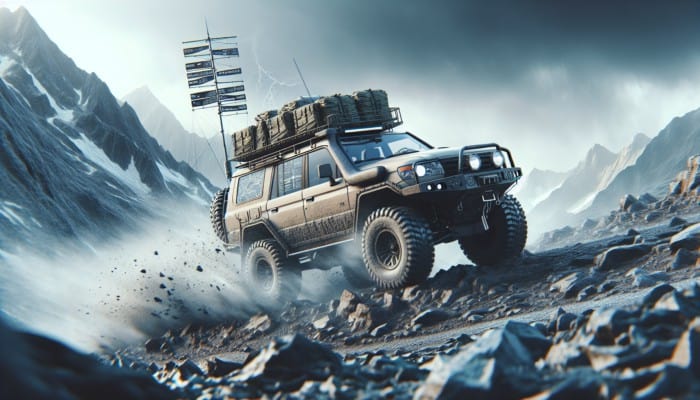
Choosing the right vehicle is essential for anyone committed to prepper vehicle preparation. The vehicle should be sturdy and versatile, able to adapt to various scenarios. Durability is a primary concern, requiring a vehicle that can withstand rough terrains and unpredictable weather conditions. Seek models known for their robust construction and reliability in stressful situations.
Storage capacity is another vital factor. A prepper vehicle must provide sufficient space for passengers and critical supplies, tools, and equipment. Vehicles like SUVs or trucks typically offer the necessary cargo room for a well-rounded survival kit. Additionally, evaluate the vehicle's fuel efficiency; high fuel consumption may become a significant drawback in fuel scarcity.
Moreover, assess the vehicle’s off-road capabilities. A four-wheel-drive system becomes indispensable if your plans include traversing rugged terrain or remote areas. Vehicles with high ground clearance and reinforced suspension systems provide flexibility for unexpected obstacles.
Finally, the accessibility of parts and repair services should be considered. Specialized repair services may be unavailable in an emergency, so choosing a vehicle with commonly available parts can prevent future challenges. Opt for models with broad recognition and a supportive community of users who can provide valuable insights and experiences.
Enhancing Off-Road Performance: Essential Modifications
Enhancing the vehicle's off-road capabilities after selecting it is crucial. The right modifications can be the deciding factor between safety and danger during emergencies.
Begin by upgrading the tyres. All-terrain or mud-terrain tires deliver superior traction on loose surfaces, a vital feature when venturing off the beaten path. In addition, consider investing in a lift kit. A lift kit elevates the vehicle, increasing ground clearance, which enables you to navigate obstacles without damaging the undercarriage.
Another fundamental modification is the installation of skid plates. These protective shields safeguard the vehicle's vital components from rocks and debris, making them especially beneficial when driving on paved roads. Furthermore, a winch can be invaluable if you find yourself stuck in mud or snow; it allows you to free yourself without needing outside assistance.
Don't underestimate the importance of a durable battery and electrical system. Off-road conditions can place significant demands on your vehicle, so a reliable power source is essential. Upgrading to a dual-battery system can provide ample support for additional lights and communication devices without draining the primary battery.
Lastly, think about adding auxiliary lights. Enhanced visibility during night travel or in adverse weather conditions can dramatically improve safety. LED light bars or fog lights can illuminate your path and make your presence known in low-visibility scenarios.
Crucial Supplies and Gear for Your Vehicle's Readiness
A well-equipped vehicle is incomplete without the right gear and supplies. The heart of prepper vehicle preparation lies in readily available, thorough survival kits. Begin with the essentials: a fully stocked first aid kit is a must-have. This kit should include bandages, antiseptic wipes, pain relievers, and any personal medications you may require.
Next, include tools suitable for various situations. A multi-tool or Swiss Army knife provides versatility, while a dedicated survival shovel can serve multiple functions, from digging to self-defense. Additionally, portable jumpstarters are invaluable, allowing you to revive a dead battery without needing another vehicle.
Food and water are non-negotiable components of your kit. Consider stashing non-perishable food items, such as energy bars and canned goods that require minimal preparation. Water purification tablets or a portable water filter can ensure access to safe drinking water, even in compromised conditions.
A fire-starting kit is essential for warmth and cooking. This kit should include waterproof matches, lighters, and fire starters. Moreover, a compact cooking system will enable you to prepare meals efficiently in the field.
Communication devices are also vital. A hand-held radio or satellite phone can be a lifesaver in remote areas where cellular signals are unreliable. Ensure you have spare batteries or a backup power source to keep these devices functional.
Lastly, don't overlook the significance of comfort items; a blanket, a change of clothes, and a small pillow can significantly enhance your comfort during extended periods sn your vehicle.
Essential Maintenance Strategies for Your Prepper Vehicle
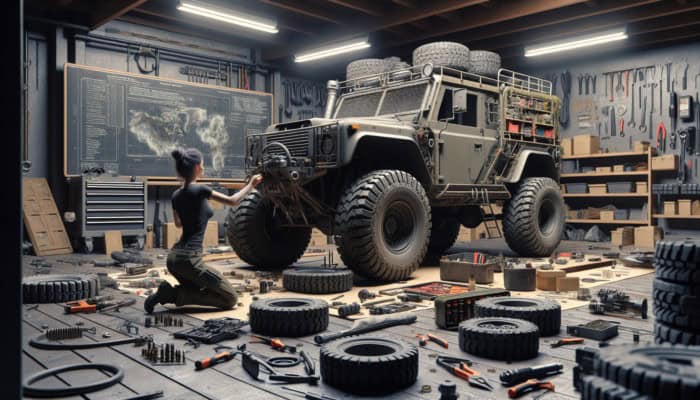
The reliability of your vehicle is a cornerstone of your survival strategy. Therefore, maintaining your vehicle is a critical element of prepper vehicle preparation. Regular maintenance checks can prevent breakdowns and ensure your vehicle remains operational when you need it the most.
Implementing Regular Maintenance Checks for Optimal Performance
Consistent maintenance checks form the backbone of effective vehicle preparedness. This involves systematically inspecting vital components, including the engine, brakes, and tires. Establish a maintenance schedule that aligns with your vehicle's manual recommendations while considering the specific demands of your prepping lifestyle.
Start with the engine. Regular oil changes are essential for prolonging engine life. Ensure you check fluid levels, such as brake fluid, coolant, and transmission fluid, as these components are crucial for the vehicle's overall performance. Neglecting these can lead to catastrophic failures.
Maintaining your tyres is equally essential. Regularly check tyre pressure and inspect for signs of wear and tear. Ensure that your spare tyre is in good condition and that you have the necessary tools for changing a tyre that is easily accessible. Rotating your tires according to the manufacturer’s guidelines can extend their lifespan and enhance fuel efficiency.
In addition, kmonitorthe battery. Corrosion can severely impact battery performance. Clean the terminals and frequently check the battery’s charge, especially before embarking on long trips or prepping excursions.
Finally, pay attention to both the exterior and interior of the vehicle. Regular cleaning can prevent rust and wear, while keeping the interior organized and clutter-free can facilitate aapid remergency response.
Essential Knowledge for Emergency Repairs
Acquiring basic repair skills is invaluable in trapper vehicle preparation. Knowing how to perform simple repairs can save time and enhance safety in emergency situations. Familiarize yourself with your vehicle’s manual, which contains essential information for troubleshooting common issues.
Start by learning how to change a flat tyre. Practice this skill until you can perform it efficiently. Similarly, understand the process of jump-starting your vehicle; this knowledge could prove crucial if your battery fails unexpectedly. Carrying a jump starter or jumper cables and a basic tool kit is essential for any prepper vehicle.
Learn to assess and replace fluids as needed. Identifying leaks or low fluid levels can prevent minor issues from escalating into major problems. Additionally, understanding how to check and replace fuses can prevent strandings due to electrical failures.
Having a basic understanding of your vehicle's operation can be advantageous. Regarding more significant repairs, consider taking an introductory mechanics course or exploring online resources to help you grasp the essentials of vehicle maintenance and repair.
Lastly, ensure you have the necessary tools on hand. An essential toolkit should include wrenches, pliers, screwdrivers, and duct tape. Duct tape, in particular, can temporarily fix numerous issues, from exhaust leaks to holding broken components together until a more permanent solution can be applied.
Efficient Fuel Storage and Management Practices
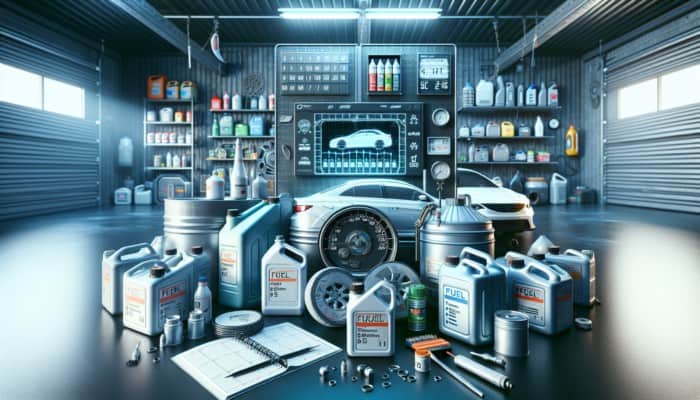
Effective fuel management is a critical aspect of prepper vehicle preparation, as fuel may become scarce in times of crisis. Understanding storing and managing fuel wisely can enhance your vehicle's operational readiness.
Begin by safely storing fuel. Use approved containers that meet safety standards. Avoid filling containers to the brim; leaving space allows for expansion, which can help prevent spills. Store fuel containers in a superb, dry location, away from direct sunlight and heat sources.
Establish a rotation system for your fuel supply. Fuel degrades over time, so using older fuel first is essential. Mark containers with dates to keep track of when they were filled and ensure that your stock is periodically refreshed
Additionally, consider investing in a fuel stabilizer. These products can extend the shelf life of fuel and maintain its effectiveness, ensuring that when you need it, your fuel remains viable.
Understanding your vehicle's fuel consumption is key to fuel management. Knowing your vehicle's range and fuel efficiency can help you plan your routes and avoid running out of fuel when it matters most.
Lastly, have a backup plan for fuel. This might include a portable fuel pump or siphon that allows you to gather fuel from alternative sources if necessary. Always remain prepared for unexpected situations, as circumstances can change rapidly in a survival scenario.
Implementing Effective Security Measures for Your Prepper Vehicle
In the realm of prepper vehicle preparation, security is of utmost importance. Your vehicle serves not only as a means of transportation but also as a mobile base for survival. Consequently, protecting it from theft and damage is crucial.
Strategies for Safeguarding Your Vehicle Against Theft
Securing your vehicle against theft involves a multi-faceted approach. Start with basic deterrents, such as steering wheel locks and immobilizers. These devices complicate the process for opportunistic thieves attempting to steal your vehicle.
Consider installing a GPS tracking system. If your vehicle is stolen, having a tracking device can assist law enforcement in recovering it more swiftly. Additionally, visible deterrents like security stickers can dissuade thieves from targeting your vehicle.
Another effective strategy is to park in well-lit, busy areas whenever possible. Avoid leaving your vehicle unattended for extended periods, especially in isolated locations. If you must leave your vehicle, ensure that all windows are closed and doors are locked.
Think about utilizing a hidden kill switch that disables the ignition system. This adds an extra layer of security, making it difficult for thieves to start your vehicle, even if they manage to gain access.
Lastly, keep valuables out of sight. If thieves see valuable items within your vehicle, they may be more inclined to break in. Utilize a secure storage solution for your gear and supplies that is not easily visible from outside.
Mastering Defensive Driving Techniques for Crisis Situations
Developing defensive driving techniques is essential for navigating potentially dangerous situations. Your vehicle may be your best asset during a crisis, so knowing how to operate it safely becomes vital.
Begin by recognizing the importance of situational awareness. Always be conscious of your surroundings, especially in unfamiliar areas. Scan the environment for threats or hazards, such as aggressive individuals or hazardous road conditions.
Practice maintaining a safe following distance. This approach provides you with more time to react if the vehicle in front of you stops suddenly or encounters trouble. Additionally, be prepared to evade obstacles or potential threats; this can involve changing lanes or taking alternative routes when necessary.
Another key aspect of defensive driving is understanding when to blend in and stand out. Sometimes, it may be more advantageous to remain inconspicuous, while at other times, asserting your presence may be necessary for safety. Assess the situation wisely.
Furthermore, familiarize yourself with off-road driving techniques. In emergencies, you may need to navigate challenging terrain. Understanding how to handle varying road conditions—such as mud, snow, or gravel—can prevent you from becoming stuck or losing control.
Lastly, consider enrolling in a defensive driving course. Professional instruction can provide valuable insights and techniques to enhance your ability to react effectively in high-pressure situations.
Effective Concealment and Camouflage Strategies for Your Vehicle
In crisis situations, your vehicle's visibility can make you a target. Implementing concealment and camouflage strategies can provide a tactical advantage in avoiding unwanted attention.
Start by evaluating your vehicle’s colour. Neutral tones, like green, brown, or grey, are less likely to attract attention in natural environments. If your car is brightly coloured, consider using vehicle wraps or removable covers to help it blend in with its surroundings.
When parked, position your vehicle to obscure it from view. Seek natural cover, such as trees, bushes, or buildings, to help conceal your vehicle. This not only protects your vehicle from potential threats but can also offer you a strategic vantage point.
Additionally, avoid drawing attention to your vehicle by refraining from loud music, excessive idling, or displaying stickers that might indicate your preparedness. Keep the exterior clean and avoid modifications that could make your vehicle stand out.
Consider carrying a camouflage net or tarpaulin that can be quickly deployed when you need to conceal your vehicle. This can be particularly useful if your health is paramount.
Finally, engage with your environment. Familiarize yourself with the locations you frequent, as understanding the terrain can help you effectively utilize concealment strategies. During times of crisis, the ability to blend into your surroundings can be a lifesaver.
Strategies for Effective Communication and Navigation During Crises
Communication and navigation are crucial components of prepper vehicle preparation. In any survival scenario, having reliable tools and strategies can significantly enhance one's ability to maintain situational awareness and find one's way.
Investing in Reliable Communication Devices
Communication devices are vital for staying connected during emergencies. Consider investing in hand-held two-way radios, which enable communication without relying on cellular networks. These devices are particularly useful when travelling in remote areas where mobile reception may be unreliable.
In addition to radios, think about satellite phones. Although more expensive, they offer a backup communication method that functions even in areas without cellular coverage. Ensure you have spare batteries or a solar charger to keep these devices operational.
Text messaging can also be effective in emergencies, as texts typically require less bandwidth than voice calls. Familiarize yourself with messaging apps that function offline or in low-signal areas.
Establish a predetermined communication plan with family or team members. Agree on check-in times and locations and alternative methods for reaching one another if primary channels fail.
Lastly, ensure you have a local emergency contact list saved in your communication devices. This list should include essential numbers, such as local emergency services, along with contacts of friends and family who can passist
Essential Navigation Tools and Techniques to Enhance Preparedness
Navigating unfamiliar territory is a vital skill in trepper vehicle preparation. While GPS devices are invaluable, they are not infallible, so having multiple navigation tools at your disposal is a good idea. is important
Start by equipping your vehicle with a reliable GPS unit. Please familiarise yourself with its features, including offline maps, which can be advantageous when travelling through areas lacking signal. Ensure your GPS is updated regularly to reflect the latest road information.
In addition to electronic navigation tools, a physical map of the area is necessary. Is carried. This serves as an invaluable backup that can guide you when technology fails. Learn how to read maps and understand topographical symbols, as this knowledge can significantly enhance your navigation skills.
Consider using a compass as an additional navigation aid. Knowing how to use a compass in conjunction with a map can provide you with a reliable means of orienting yourself, especially in dense wilderness or urban environments.
Finally, practice your navigation skills regularly. Explore local areas using only a map and compass to build confidence in your ability to find your way without depending solely on technology.
Implementing Backup Power Solutions for Essential Devices
Power outages can render many communication and navigation devices useless in survival situations. Therefore, having backup power solutions is essential for preparing your prepper vehicle.
Start by investing in portable power banks that can charge your devices on the go. Ensure they are compatible with your communication tools and possess sufficient capacity to recharge them multiple times.
Solar chargers represent another excellent option, particularly for extended trips. These devices harness solar energy to charge your communication and navigation equipment, providing a sustainable power source even in remote locations.
Consider implementing a dual battery system for your vehicle. This configuration allows one battery to power your vehicle while the other is reserved for charging your devices. Ensure that this system is installed correctly and regularly check the health of both batteries.
Moreover, maintain a supply of spare batteries for essential devices. Organize them in a waterproof container to ensure they remain safe and functional, even under adverse conditions.
Lastly, develop a plan for conserving power. This can include turning off devices when not in use and limiting screen time on communication tools to prolong battery life.
Comprehensive Planning for Diverse Survival Scenarios
A thorough prepper vehicle preparation strategy must address various potential scenarios. Tailoring your vehicle and preparations accordingly is vital. In urban emergencies and rural survival situations
Urban Survival: Equipping Your Vehicle for City Emergencies
Urban environments present unique challenges during crises. Preparing your vehicle for city emergencies requires understanding the specific risks and how to navigate them effectively.
Start by reinforcing your vehicle. Consider adding security film to windows or using shatter-resistant glass to deter break-ins. Additionally, maintain a low profile; avoid displaying survival gear or supplies that could attract unwanted attention.
Familiarize yourself with your city’s layout, including potential escape routes and safe havens. Knowing where to find resources such as food, water, and medical assistance can be invaluable during an emergency.
Traffic congestion can hinder your escape. In urban settings, equip your vehicle with a reliable navigation system that provides real-time traffic updates and alternative routes to avoid bottlenecks.
Moreover, keep essential urban survival gear in your vehicle. This includes personal protective equipment, a compact first aid kit, and tools for self-defense. These items can be critical for navigating dangerous situations in crowded urban areas.
Finally, communication protocols with family and team members specific to urban settings should be established. Agree on designated meeting points and check-in times to maintain accountability during a crisis.
Rural and Wilderness Survival: Preparing Your Vehicle for Remote Challenges
Rural and wilderness survival scenarios necessitate a different approach to prepper vehicle preparation. Your vehicle must be equipped to handle the unique challenges of remote environments.
Start by ensuring your vehicle can traverse rough terrain. Equip it with all-terrain tires and a lift kit to manage uneven ground effectively. Additionally, installing skid plates can protect vital components from damage caused by rocks and debris.
Pack essential survival gear tailored for wilderness conditions. This includes a comprehensive first aid kit, fire-starting supplies, and food and water purification systems. A portable cooking system can also be invaluable for preparing meals in remote areas.
Familiarize yourself with local wildlife and potential hazards. Understanding the area’s ecosystem can help you prepare for encounters with dangerous animals or challenging weather conditions.
Lastly, establish a plan for long-term survival in remote areas. Identify potential sources of food and water and emergency evacuation routes. Knowing how to signal for help in an emergency can also be crucial.
Bugging Out: Preparing Your Vehicle for Rapid Evacuation
Your vehicle must be ready for bugging out. In a crisis that necessitates swift evacuation. Preparing your vehicle for this scenario involves ensuring it can efficiently transport you and your essential supplies tsafely
Begin by ensuring your vehicle is in top condition. Conduct a thorough maintenance check to prevent breakdowns during your evacuation. This should include checking tire pressure, fluid levels, and battery health.
Pack a bug-out bag for each family member, containing essential supplies such as food, water, clothing, and first aid items. Store these bags in an easily accessible location within your vehicle to facilitate a swift departure.
Consider multiple evacuation route options. Familiarize yourself with various paths to safety, as roads may become congested or blocked during a crisis. Having alternative routes prepared can save valuable time.
Lastly, ensure your vehicle is stocked with communication and navigation tools. This includes portable chargers, maps, and communication devices to keep you informed and connected during an evacuation.
Budgeting and Cost-Effective Strategies for Vehicle Preparation
Preparing your vehicle for emergencies does not have to strain your finances. Implementing effective budgeting strategies and seeking cost-effective solutions can ensure your prepper vehicle preparation remains financially viable.
Smart Fund Allocation for Vehicle Preparation
When budgeting for prepper vehicle preparation, it’s crucial to prioritize your expenses. Start by identifying your immediate needs, such as essential repairs, modifications, and vital supplies. Create a list of these necessities and assign a budget to each item.
Consider establishing a dedicated fund for vehicle preparation. This could be a separate savings account or a designated portion of your monthly budget. Having a clear financial goal can help you stay focused on your preparations.
Explore financing options if necessary. Certain vehicle upgrades may exceed your immediate budget—research low-interest loans or financing plans to help you distribute costs over time.
Additionally, be vigilant about seasonal sales or discounts on vehicle parts and supplies. Many retailers offer promotions during specific times of the year, allowing you to acquire necessary items at a reduced cost.
Finally, the potential return on investment for each modification or supply is evaluated. Prioritize those that provide the most significant benefits for your specific prepping needs.
DIY Modifications to Enhance Your Vehicle Economically
DIY modifications can significantly lower expenses while enhancing your vehicle’s capabilities. Many upgrades can be performed with essential tools and a bit of creativity.
Start by researching common modifications that can improve your vehicle's performance. Simple upgrades, such as adding a roof rack or installing additional lighting, can often be completed with minimal skill and expense.
YouTube and online forums are excellent resources for finding step-by-step guides on DIY vehicle modifications. Many enthusiasts share their experiences, providing valuable insights and tips to aid your efforts.
Additionally, consider repurposing materials you already possess. Old equipment and supplies can often be transformed into practical upgrades for your vehicle. For instance, using an old tarp to create a makeshift cover for your supplies can save money while providing valuable protection.
Networking with fellow preppers can also lead to cost-effective solutions. Join local groups or online communities where you can exchange resources, trade equipment, or collaborate on larger projects. This sense of community can provide support and enhance your overall preparedness.
Lastly, keep an open mind when learning new skills. Engaging in DIY projects can improve your self-sufficiency and enhance your ability to respond effectively to challenges.
Strategies for Sourcing Affordable Gear and Supplies
Finding affordable gear and supplies for your vehicle is critical to prepper vehicle preparation. Various strategies can help you acquire essential items without overspending.
Start by exploring thrift stores, garage sales, and online marketplaces for second-hand gear. Many individuals sell or donate items that are still in excellent condition, allowing you to find valuable supplies at a fraction of the retail price.
Consider bulk purchasing options. Many retailers offer discounts for buying in larger quantities. This can benefit non-perishable food items, first aid supplies, or fuel storage containers.
Join local prepper groups or online forums to connect with others in the community. Members often share information about sales, discounts, or local resources for obtaining gear at reduced prices.
Lastly, always look for seasonal sales or clearance events. Many retailers reduce outdoor and emergency supply prices during specific times of the year, allowing you to stock up on essential items without stretching your budget.
Enhancing Your Preparedness Through Training and Skill Development
Equipping your vehicle is only part of the prepper vehicle preparation equation. Developing the necessary skills and training ensures your readiness for various scenarios.
Driving Skills Essential for Emergency Situations
Refining your driving skills is crucial for effectively navigating emergencies. Start by familiarizing yourself with your vehicle's capabilities. Understanding how your vehicle responds to different conditions can enhance your confidence and control.
Consider enrolling in a defensive-driving course. These courses teach valuable techniques for handling various driving scenarios, from emergency braking to evasive maneuvers. The skills learned can prove invaluable in high-pressure situations.
Practice driving in different conditions. Take your vehicle off-road or in adverse weather, such as rain or snow. This experience will help you gain confidence in your driving abilities and improve your performance under challenging circumstances.
Additionally, learn how to operate your vehicle’s features effectively. Familiarize yourself with the braking system, traction control, and other essential controls. Understanding how to engage these features can enhance your vehicle's emergency performance.
Lastly, consider developing off-road driving skills. Many situations may require you to travel beyond paved roads, so understanding how to navigate rough terrain can significantly enhance your preparedness.
Essential Survival Skills Relevant to Vehicle Preparation
Survival skills form the foundation of any prepper vehicle preparation strategy. These skills enhance your ability to respond to various emergencies and can be lifesaving in critical situations.
Begin by honing your first-aid skills. It is invaluable to know how to treat injuries, administer CPR, and respond to medical emergencies. Consider taking a certified first-aid course to gain practical knowledge and confidence.
Fire-starting skills are equally essential. Learn various fire-igniting methods, including flint and steel, matches, and fire starters. Understanding how to build a fire in different environments can provide warmth and a means of cooking.
Additionally, develop foraging skills. Familiarizing yourself with local flora can help you identify edible plants and resources in the wild—an invaluable skill if food supplies become scarce.
Practicing navigation skills using a map and compass is also critical. Finding your way without relying on technology will enhance your self-sufficiency and situational awareness during emergencies.
Lastly, consider self-defense training. Protecting yourself and your family can provide peace of mind in high-stakes situations.
Training for Family and Team Preparedness
Ensuring your family or team is well-trained in using your prepper vehicle enhances your overall preparedness. Start by conducting regular drills that allow everyone to practice their roles during emergencies.
Establish clear communication protocols within your group. Knowing who is responsible for what can streamline your response during a crisis, reducing confusion and improving efficiency.
Consider scheduling training sessions that cover essential vehicle skills, first aid, navigation, and survival techniques. This collective knowledge will strengthen your group’s ability to respond effectively to various scenarios.
Additionally, encourage open discussions within your group to address concerns or questions. Understanding each member's strengths and weaknesses can foster collaboration and build confidence.
Finally, regularly evaluate and update your training plans. As new information or skills emerge, adapting your training approach can ensure that your family or team remains prepared for any situation.
Frequently Asked Questions
What does prepper vehicle preparation entail?
Prepper vehicle preparation involves equipping and modifying your vehicle to ensure it is ready for emergencies or survival. This includes selecting the right vehicle, enhancing off-road capabilities, and stocking essential supplies.
What factors should I consider when choosing the right prepper vehicle?
Choosing the right prepper vehicle depends on durability, storage capacity, off-road capability, and parts and service availability. SUVs and trucks are often recommended for their robustness and adaptability.
What modifications are necessary for off-road capability?
Modifications for off-road capability include upgrading to all-terrain tires, adding a lift kit, installing skid plates, and incorporating a winch for emergencies. These enhancements improve your vehicle's ability to traverse rough terrain.
What essential gear should I keep in my prepper vehicle?
Essential gear includes a first aid kit, multi-tool, portable cooking system, food and water supplies, a fire-starting kit, and communication devices. This gear ensures readiness for various emergency scenarios.
How often should I perform maintenance checks on my vehicle?
Regular maintenance checks should be performed according to your vehicle's manual recommendations. This typically includes checking fluid levels, tire pressure, and battery health every few months or before long trips.
What basic repair skills should I learn for my vehicle?
Basic repair skills include changing a flat tire, jump-starting the battery, checking and replacing fluids, and troubleshooting common issues. Familiarity with your vehicle's manual can also aid in repairs.
What are the best practices for storing fuel for my prepper vehicle?
Store fuel in approved containers, away from direct sunlight and heat sources. Implement a rotation system to ensure that older fuel is used first, and consider using fuel stabilizers to extend shelf life.
What security measures can I take to protect my vehicle from theft?
To protect your vehicle from theft, utilize steering wheel locks, GPS tracking systems, and visible deterrents. Additionally, park in well-lit areas and keep valuables out of sight.
What communication devices should I have in my vehicle?
Essential communication devices include hand-held two-way radios, satellite phones, and a selection of spare batteries. Establishing a communication plan with family or team members is also crucial.
How can I prepare my vehicle for urban emergencies?
To prepare your vehicle for urban emergencies, reinforce it with security features, maintain a low profile, and familiarize yourself with local escape routes and resources. It is also important to keep essential urban survival gear on hand.
Explore our world on X!
Surviving Public Transit Failure: A Universal Guide
Effective Strategies for Navigating Transit Disruptions What Essential Items Should You Include in Your Emergency Kit? Surviving Public Transit Failure: Creating an efficient emergency kit is vital for managing unforeseen transit disruptions. Your kit should contain essential items such as water, durable snacks, and a reliable flashlight to keep you sustained during unexpected delays. It’s […]
Blizzard Vehicle Prep: Essential Winter Safety Guide
Thorough Pre-Trip Vehicle Inspection for Safe Winter Travel Assessing Tire Condition for Optimal Traction Blizzard Vehicle Prep: The condition of your tires plays a crucial role in ensuring a secure connection between your vehicle and the road, particularly under challenging snowy conditions. Before embarking on any winter excursion, it is essential to thoroughly assess both […]
Preparing Your Vehicle: Stay Ahead of Winter Challenges
Prepare Your Vehicle for Winter: Essential Steps for Safe Driving The winter season is a breathtaking time of year, showcasing picturesque landscapes adorned with snow and cozy nights by the fireplace. However, alongside its captivating beauty, winter brings a myriad of challenges, particularly concerning driving on icy roads and facing unexpected emergencies. As responsible drivers, […]

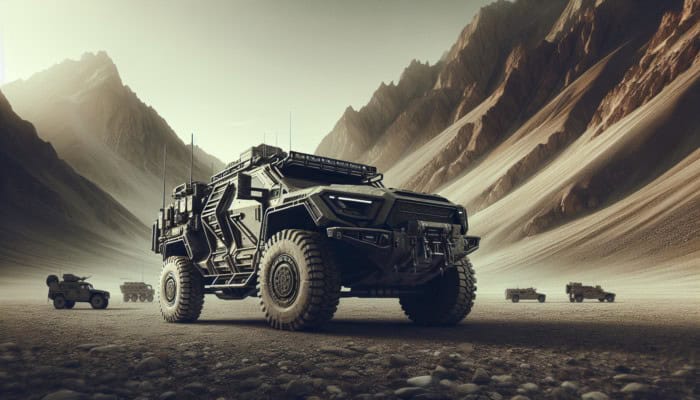


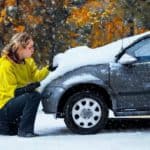


Your insights on vehicle selection for prepper purposes resonate deeply with the current challenges many are facing in uncertain times. The emphasis on durability and versatility is crucial; I believe that it’s equally important to consider fuel efficiency and maintenance accessibility.
Your insights on vehicle selection for prepping resonate deeply with me. The idea of choosing a sturdy and versatile vehicle is paramount, as I’ve seen firsthand how different terrains can easily challenge even the most dependable models. I’m currently considering a vehicle that not only has the robustness you mention but also a good fuel efficiency since long-term survival often pivots on resource conservation.
It’s great to hear that the discussion on vehicle selection for prepping resonated with you. The reality of navigating different terrains can really put a vehicle to the test, and having something rugged and adaptable makes all the difference.
Ah, the quest for the ultimate prepper vehicle! It’s like dating but with a lot more mud, potential zombies, and way fewer candlelit dinners—unless you count the glow from your emergency gear. I couldn’t agree more with your assessment about durability and storage capacity being the holy grail of prepper vehicle selection. Who knew that finding a car could feel like a Tinder match gone rogue, where the stakes involve survival rather than swiping left?
The discussion on selecting the right vehicle for prepper purposes is incredibly timely, especially as more people begin to consider the importance of preparedness in various aspects of their lives. Your emphasis on durability and versatility truly resonates, as these characteristics are fundamental when facing unexpected situations—whether they be natural disasters or other emergencies.
You raise an important point about the growing awareness around preparedness. It’s interesting how many of us might have thought of prepping as something only a select few engaged in, but recent events have certainly brought these considerations into everyday conversations.
“Absolutely, preparedness is key! If you’re looking for reliable options that combine durability and versatility, check out our curated selection of vehicles designed for just that.”
https://survivalbite.com/wild
I appreciate your thoughts on the discussion around vehicle selection for prepper purposes. You’re right—durability and versatility are game-changers when unexpected situations arise. When looking at vehicles, it can also be beneficial to consider fuel efficiency and maintenance simplicity. Depending on the scenario, you might be far from a service center, so a reliable model can save a lot of headaches down the line.
You bring up some really important points about vehicle selection for prepping. It’s not just about having four wheels and an engine; it becomes a lifeline in emergency situations. I can totally relate to the importance of durability too. A few years back, I decided to invest in a used SUV specifically for outdoor adventures and potential emergencies. I went for a model that’s known for its off-roading capabilities and reliability because I wanted to be sure it could handle anything from rough back roads to unexpected weather changes.
I really appreciate the points you’ve laid out regarding the essential aspects to consider when selecting a vehicle for prepper purposes. It seems like choosing the right vehicle is practically the backbone of any survival strategy. I’ve always believed that the vehicle we rely on should not only transport us but also serve as a mobile base of operations during emergencies.